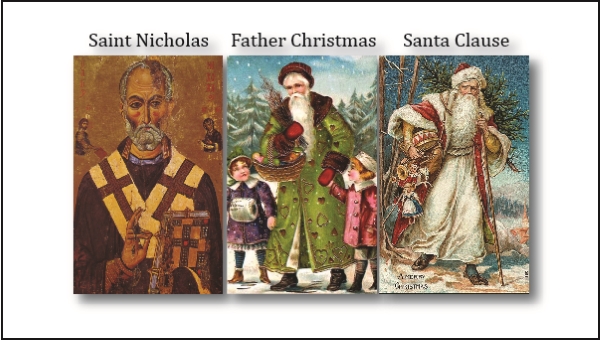By Tyson Thorne

Ever wonder where the legend of Santa Claus came from? Or the tradition of giving gifts at Christmas time? How did the celebration of Jesus’ birth turn into the largest commercial gift-giving franchise of all history? Well gather around, sit back in a comfortable chair near the fireplace, and prepare to be entertained by a bit of history.
Our story begins with a little church history, in this case starting in the city of Myra, Turkey. On March 15, 270 AD a child was born to a wealthy Greek couple, the only child the couple would ever have. From the time he was a small boy Nicholas exhibited a very firm faith in Jesus. Even at a young age the child understood what James had taught a few centuries before, that faith without works is dead.
While still a boy, Nicholas’ parents died from an epidemic and was sent to live with his uncle whom he was named after. Uncle Nicholas was the Bishop of Patara and schooled the younger Nicholas and later ordained him as priest. He returned to his home city to serve Christ among his native people.
As he grew so did his faith and his generosity. By the time he became bishop of the Greek Christian churches of Myra his gifts - usually given secretly to the cities poor – had somehow become well known. Nicholas was also steadfast in his theology, for which he was imprisoned for many years by Emperor Diocletian. Upon his release he fought against the early Christian heresy of Arianism and attended the Council of Nicaea which condemned this new notion that Jesus was not God but rather a God-created divine person. He was also one of the original signers of the Nicaean Creed. Throughout his life he stayed true to his calling in Christ and served the city of Myra (now called Demre) with grace and generosity until his death on December 6, 343.
Sometime during the 1100’s his generous spirit and provision for the poor, still remembered by many, resulted in his finally being venerated as a saint. The day of December sixth was set aside each year to remember his gifts to the poor and to inspire others to do likewise. In Dutch speaking territories “Saint Nicholas” was translated as Sinterklaas.
Several hundred years later a fictional character was invented in Britain to typify and instil the spirit of good cheer at Christmas time. This character, Father Christmas, brought with him peace, joy, good food, wine and revelry. He was the personification of what every Britain aspired to during the holiday season, but was not particularly religious or known for moderation or even moral virtue. He was especially extolled during the reign of King Henry VIII and pictured as a large man in green robes lined with fur. The day once set aside for remembering Nicholas by giving gifts was moved from the sixth of December to the 24th. Father Christmas was the inspiration for the ghost of Christmas present in Charles Dickens’ classic, A Christmas Carol.
Somewhere along the way the legend of Father Christmas merged with the real life Saint Nicholas and became a character who brought not only good cheer during the Christmas season, but toys to the poor children of the world. The first mention of this new Sinterklaas, or Santa Claus appears in the book A New Year’s Present published in 1821.
Understanding this history is an important step in understanding many of the other traditions of Christmas that Christ-followers celebrate today, as we will discover over the next couple weeks.
|
|
|
